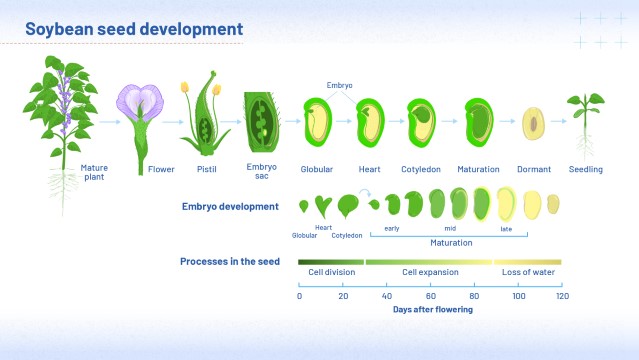Development of a soybean seed
Seeds are essential to plants’ survival: they protect and nourish the developing embryo that will eventually become the next-generation plant. In legumes, the seed has two cotyledons, which become more defined as the seed develops.
Figure 2 (below) shows you the developmental process of soybean, a typical legume. You might like to view and download this image at high quality. To do this, first click the 'Maximise' link below the image: to download, right click or control click once the image has opened.
Our story starts with a flower on the parent soybean plant, dusted with pollen grains. Making its way to the female reproductive cells or ‘gametes’ inside the flower, a tube develops from each pollen grain, allowing male gametes to travel to the base of the flower. This is where fertilization occurs.
After fertilization, the first diploid cells to appear are a tiny globular mass of dividing cells, which develop into a heart-shaped embryo. It takes some days for the cotyledons to become distinguishable, but once they do, they grow larger and larger, eventually becoming bigger than the embryo. Inside the cotyledons, proteins, carbohydrates and lipids are being built up in a process called ‘seed filling’. Once the seed has matured, water is expelled. As the seed continues to lose water, it shrinks a little, so that by the time it is ready for harvest, the cotyledons are more compact than they had been earlier in the process.
In the rest of this section, you will discover more about what happens during seed development, and why this matters so much to genebanks.
Some definitions

